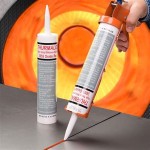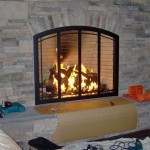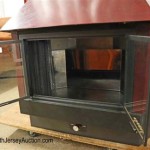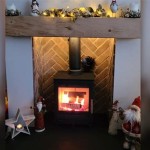Corner Fireplace Gas Logs: Aesthetics and Efficiency in Limited Spaces
Corner fireplaces present unique design challenges and opportunities. They are often incorporated into rooms where space is a premium, requiring homeowners to maximize both functionality and aesthetic appeal. One popular solution for achieving the ambiance of a traditional fireplace without the mess and ongoing maintenance of wood-burning models is the installation of gas logs. Corner fireplace gas logs are specifically designed to fit neatly within the angled space, providing warmth and visual interest.
The selection of gas logs for a corner fireplace requires careful consideration of several factors, including the size and shape of the firebox, the type of gas available (natural gas or propane), and the desired aesthetic. Understanding the different types of gas log sets and their installation requirements is crucial for a successful and visually pleasing outcome.
Understanding Gas Log Sets for Corner Fireplaces
Gas log sets are not a one-size-fits-all solution. They come in a variety of styles, sizes, and materials, each offering different characteristics in terms of appearance, heat output, and installation complexity. Before purchasing a gas log set for a corner fireplace, it is essential to understand the distinctions between the various types available.
Vented gas logs are designed to be used in a fully functional fireplace with a working chimney. They produce realistic flames and embers, mimicking the appearance of a traditional wood-burning fire. However, vented gas logs are less efficient at producing heat than vent-free models, as a significant portion of the heat escapes through the chimney. These log sets require a damper to be left open during operation, which contributes to heat loss. Vented log sets prioritize aesthetic appeal and realistic flame patterns over maximum heat output.
Vent-free gas logs, also known as ventless gas logs, offer greater energy efficiency because they do not require a chimney or a damper. They burn gas more completely, converting a higher percentage of the fuel into heat. This makes them suitable for supplemental heating in smaller spaces. Vent-free gas logs are typically equipped with an oxygen depletion sensor (ODS), which shuts off the gas supply if the oxygen level in the room drops to a dangerous level. While vent-free logs produce more heat, they may not offer the same level of realism as vented logs, and some individuals are sensitive to the byproducts of combustion, even though they are within safety regulations. Proper ventilation is still crucial, even with vent-free models.
The material used in the construction of gas logs also plays a significant role in their appearance and longevity. Ceramic fiber logs are lightweight and relatively inexpensive. They heat up quickly and produce a bright, vibrant flame. However, ceramic fiber logs are less durable than other options and may degrade over time. Refractory ceramic logs are more durable and have a more realistic appearance. They retain heat well, providing a consistent and radiant warmth. Refractory ceramic logs are a more substantial investment but offer a longer lifespan and a more authentic aesthetic. Concrete logs are the most durable option. These logs have a very realistic appearance, mimicking the texture and color variations of real wood. Concrete logs are heavier and more expensive than ceramic options, but they offer superior longevity and heat retention.
The burner system is a critical component of any gas log set. The burner distributes the gas evenly beneath the logs, creating a realistic flame pattern. There are several types of burner systems available, including pan burners, grate burners, and multi-burner systems. Pan burners are the simplest and most affordable type of burner. They consist of a shallow pan with gas jets that distribute the gas across the surface. Grate burners use a grate to support the logs and distribute the gas beneath them. Multi-burner systems offer the most realistic flame patterns by using multiple burners to create different flame heights and intensities.
Installation Considerations for Corner Fireplace Gas Logs
Installing gas logs in a corner fireplace requires careful planning and attention to detail. While some homeowners may choose to install gas logs themselves, it is generally recommended to hire a qualified professional to ensure that the installation is done safely and correctly. Incorrect installation can lead to gas leaks, carbon monoxide poisoning, and other hazards.
Before beginning the installation process, it is essential to inspect the fireplace and chimney (if applicable) to ensure that they are in good working order. The fireplace should be clean and free of debris. The chimney should be inspected for cracks, obstructions, and other damage. If any problems are identified, they should be addressed before installing the gas logs.
The size of the gas log set should be carefully matched to the dimensions of the firebox. The logs should fit comfortably within the firebox without touching the sides or the back of the fireplace. Overcrowding the firebox can restrict airflow and lead to incomplete combustion. Measuring the firebox accurately is crucial for selecting the appropriate size of gas logs.
Connecting the gas log set to the gas supply requires careful attention to safety protocols. The gas supply should be shut off before beginning the installation process. A qualified gas fitter should be consulted to ensure that the gas line is properly sized and connected. All gas connections should be tested for leaks using a soapy water solution. If any leaks are detected, they should be repaired immediately.
The pilot light is a small flame that ignites the main burner. The pilot light should be adjusted according to the manufacturer's instructions. The flame should be stable and blue in color. A yellow or orange flame indicates incomplete combustion, which can produce carbon monoxide. The pilot light should be regularly inspected and cleaned to ensure proper operation.
After the gas log set is installed, it is important to test the system thoroughly. The logs should be lit and allowed to burn for several minutes. The flame pattern should be realistic and consistent. The system should be checked for gas leaks and carbon monoxide. A carbon monoxide detector should be installed in the room to provide early warning of any potential problems.
Selecting the Right Aesthetic for Your Corner Fireplace
Beyond functionality and safety, the aesthetic appeal of gas logs is a major consideration. Corner fireplaces are often a focal point of a room, making the choice of gas logs critical for creating the desired ambiance. The market offers a diverse range of styles, from traditional log sets that mimic the look of aged oak or birch to more contemporary designs that incorporate stones, glass, or geometric shapes.
Consider the overall design style of the room. A rustic or traditional room might benefit from gas logs that resemble natural wood, complete with bark details and realistic textures. Logs with a darker finish can add warmth and depth to the space. A modern or minimalist room might be better suited to a more streamlined gas log set, such as those made from ceramic spheres or glass shards. These options create a clean and sophisticated look.
The arrangement of the logs is also important for creating a realistic and visually appealing fire. Many gas log sets come with instructions on how to arrange the logs for optimal flame patterns. Experiment with different arrangements to find one that suits your personal preferences. Adding decorative elements, such as ember beds or lava rocks, can enhance the realism and visual interest of the fire.
The surrounding décor can also influence the aesthetic impact of the gas logs. Consider the materials and colors used in the fireplace surround and the surrounding walls. Matching the gas logs to the overall color scheme can create a cohesive and harmonious look. Adding accessories, such as fireplace screens, tool sets, and decorative mantels, can further enhance the overall aesthetic.
Lighting plays a crucial role in showcasing the beauty of gas logs. Soft, warm lighting can create a cozy and inviting atmosphere. Dimmers can be used to adjust the lighting levels to create different moods. Consider adding accent lighting to highlight the fireplace and draw attention to the gas logs.
Regular maintenance can help to keep gas logs looking their best. Dust and debris can accumulate on the logs over time, dulling their appearance. Clean the logs regularly with a soft brush or a vacuum cleaner with a brush attachment. Avoid using harsh chemicals or abrasive cleaners, as these can damage the finish of the logs.
Corner Gas Fireplaces Heatilator

Hearth Home Technologies Corner Gas Fireplace Fireside

The Corner Gas Fireplace A Great Way To Maximize Your Space

18 Corner Orno Gas Log Burning Kiva Fireplace Kit Capo Fireside

Corner Ventless Gas Fireplace Visualhunt

Maximize Your Space With A Corner Gas Fireplace Aqua Rec S Fireside Hearth N Home

Hearth Home Technologies Corner Gas Fireplace Fireside

Corner Fireplaces Modern Gas The Davinci Collection

Chicago Corner 40le Modern Gas Fireplace Regency

110 Best Corner Gas Fireplace Ideas Design Remodel
Related Posts








